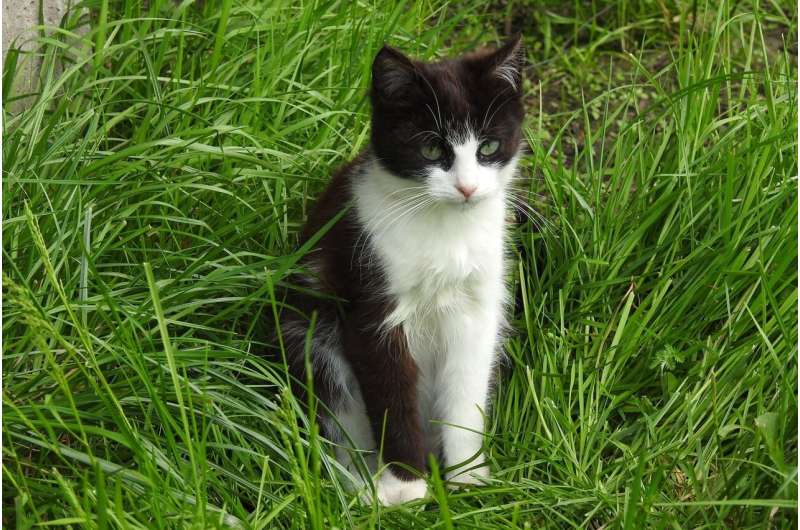This article has been reviewed according to Science X's editorial process and policies. Editors have highlighted the following attributes while ensuring the content's credibility:
fact-checked
proofread
Protecting native fauna from housecats

Fans of the musical "Cats" will know that the naming of cats is a difficult matter, and that cats have three different names. The same is true of cats in New Zealand—there are three types: companion or pet cats that live with people and rely on them for their welfare, stray cats that may rely only partly on people for food and shelter and live around centers of human habitation, and feral cats that have minimal or no reliance on people, and that survive independently of the companion cat population.
New Zealanders love their companion cats: we have the highest rate of cat ownership in the world, and cats are embedded in people's lives and culture. But cats are also a significant problem for our native fauna. Globally, cats have been implicated in the declines or extinctions of more species than any other invasive predator.
Any research into cat control, therefore, has to carefully balance their high value as companion animals with the harmful effects of cats on native wildlife and also—particularly through cats' transmission of toxoplasmosis—on human and animal health.
However, there are currently significant knowledge gaps on the impact of all three types of cats on the environment and on the best ways to monitor and manage them. As a starting point, Manaaki Whenua—Landcare Research's wildlife ecologists have undertaken a comprehensive review of current knowledge and research needs, published in the New Zealand Journal of Ecology.
Their review identifies knowledge gaps that currently prevent effective management of cats, and suggests priorities for research to address these gaps.
The priorities they identify can be grouped into four main areas:
- Improved methods for monitoring cats and their impacts.
- Developing humane, effective and socially acceptable methods to manage the impacts of cats.
- Engaging with cat owners to improve outcomes for cats, people and the environment.
- Investigating the effects of cat control on our ecosystems.
Achieving these research and predator-free goals will rely on detailed ecological knowledge, understanding current guidelines for cat ownership and management, understanding cat–human relations in a range of settings, and—importantly—the careful creation and maintenance of social license for any future cat management interventions.
More information: Management of cats in Aotearoa New Zealand: a review of current knowledge and research needs, New Zealand Journal of Ecology (2023). DOI: 10.20417/nzjecol.47.3550
Provided by Manaaki Whenua - Landcare Research



















